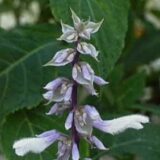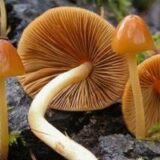Table of Contents
Ancient Hallucinogens Still Used Today
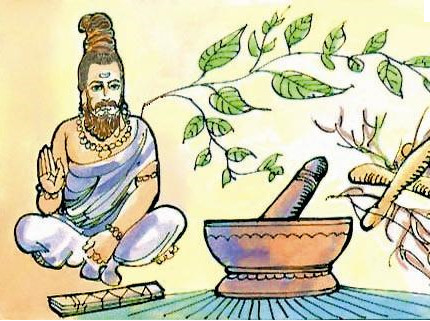
Hallucinogenic Plants Used in Shamanic Rituals
Many hallucinogens have come to and left this world throughout the ages. Some ancient texts describe hallucinogenic plants, drinks, snuffs and other concoctions which are no longer used today. Likewise, there are many ancient rituals that have involved psychoactive plants that are also hallucinogenic, that are still around today. There are still tribes and religious sects around the globe that stay loyal to their ceremonies and their ceremonial uses of some sacred plants.
Shamans consider some of these plants gateways to knowledge, other worlds and communicating with spirits of their ancestors. Some people still use hallucinogens to communicate with their gods. No matter the reason, there are many Indians left in this world, and also many modernized tribes which still practice traditional ceremonial use of hallucinogens in their shamanic rituals.
What Plants are Used in Shamanic Rituals?
Religious use of plants dates as far back as religion itself. In fact, some ceremonial use of plants even predates religion! Here are some of the ancient, traditionally used shamanic plants which induce hallucinations and are still used today.
Agara (Galbulimima belgraveana)
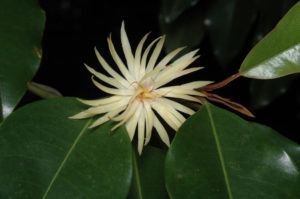
The bark and leaves of this tree can be brewed into a powerful hallucinogenic tea. The natives of Papua used this in their rituals for the visions it induced.
Angel’s Trumpet (Brugmansia arborea)
The seeds are powdered and usually added to a drink of some kind; the leaves are used to brew a tea. This is a powerful hallucinogen that allows shaman to communicate with the deceased and medicine men to diagnose and treat a variety of ailments. It is commonly used by the Indians of Sibundoy.
Ayahuasca
This hallucinogenic, ceremonial drink popular throughout South America, Central America and Mexico, originates from a variety of ingredients. Most of the ingredients come from the Amazon. One of the most famous Indian ceremonies is the Tukanoan Yurupari in Colombia. The Ayahuasca is enjoyed even today, and is made legal to Native Americans who are a part of the Native American Church, despite being illegal in the United States.
Puile (Ipomoea violacea)
This plant grows in Mexico and was used by the Aztecs long ago for its vision-inducing divinations. It is still used as a hallucinogen in many religious rituals throughout Mexico, especially Oaxaca. It is very commonly referred to as Ololiuqui.
Bakana (Scirpus sp.)
Bakana has been popular among the Tarahumara Indians of Mexico from both ancient times and also in modern religious rituals. It is one of the most powerful hallucinogens used by shaman in Mexico presently.
Blue Water Lily (Nymphaea ampla)
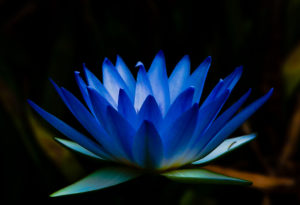
Blue Water Lily is found throughout asia and now also in Mexico. It has been used as a powerful hallucinogen all throughout Mexico and has strong sacred value among shamanic rituals both of the old world and still today.
Caapi (Tetrapteris methystica)
The Caapi-Pinima plant was used by the Maku Indians of the Amazon (a nomadic tribe). It is intoxicating and a powerful hallucinogen that is typically prepared into a drink.
Cawe (Pachycereus pecten-aboriginum)
Also known as Wichowaka, Cawe is used still today by the Tarahumara Indians of Mexico, but also served in ancient times as well in a hallucinogenic drink.
Cebil (Anadenanthera columbrina)
Cebil is well known by many names and the same active components grow in a number of related species, also referred to as Villca and Yopo. It has been used by the Orinoco tribes (but no longer employed there), and also by Indian tribes in South America, specifically Argentina and Peru, where it is still thought to be employed periodically today.
Cebolleta (Oncidium cebolleta)
Little is known about the Cebolleta plant, however, it has been suggested that it has sacred, religious uses within the Tarahumara tribes of Mexico, and that it is used as a hallucinogen.
Chacruna (Psychotria viridis)
Chacruna is a well-known and respected hallucinogen containing DMT. It has been long used in ritualistic preparations of Ayahuasca, along with other ingredients, and has long remained a shamanic tradition.
Common Reeds (Phragmites australis)
Common Reeds of many types carry DMT and can be found all over in humid, moist growing terrain. DMT is present and thus Common Reeds are used frequently as an Ayahuasca ingredient. Though used in ancient shaman rituals, Common Reed is still used in religious ritual to this very day.
Copelandia (Panaeolus cyanescens)
These mushrooms grow on cow and buffalo feces and are native to Bali. They have been used by the natives of Bali for centuries and are a ceremonial way the natives enjoyed psilocine and psilocybine even today.
Cowhage (Mucana pruriens)

Cowhage is well-known throughout India and Asia. The seeds are used for DMT and sometimes create good Ayahuasca analogs. The natives of India have used Cowhage for thousands of years in rituals and for shamanic medicine.
Datura (Datura metel)
Datura was used in early times as a hallucinogenic plant by the Chinese. It is still used today in the East Indies as a ceremonial intoxicant, for recreation and as an aphrodisiac. Sometimes it is combined with other drugs, or beverages (such as wine or a betel chew mix).
Deadly Nightshade (Atropa belladonna)
Also known as Belladonna, this beautiful but deadly nightshade has a lot of hyoscyamine and a little scopolamine. The entire plant is psychoactive and has been well known throughout Old World European folklore, especially in regard to witches brew of the Middle Ages. It is still used in hallucinogenic concoctions today.
Epena (Virola calophylla)
Sometimes called Nyakwana or Yakee, this plant us turned into a ceremonial snuff that has been used by medicine men, shaman and natives of Colombia and Brazil for centuries. It is also used in Venezuelean and Peruvian rituals. Epena contains the hallucinogen DMT.
Ereriba (Homalomena sp.)
There is very little research and information about the Ereriba plant native to Papua. It is known, however, that the plant has hallucinogenic and shamanic uses throughout the region. Medicine men use it for a variety of reasons as well.
Ergot (Claviceps purpurea)
Although St Antony’s Fire (as it is sometimes called) has never been traditionally documented as used for its hallucinogenic effects, it most certainly has created hallucinogenic effects throughout thousands of years. Recently it has become used for recreation as its potent active constituent is basically Lysergic acid diethylamide (synthetically produced from Ergot).
Eskuna (Cymbopogon densiflorus Stapf)
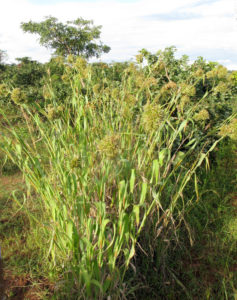
Esakuna has been long used by medicine men of Tanzania for visions and prophecy. The leaves are smoked to induce dreams and vivid visions, though little is known about the chemical composition of the plant.
Fly Agaric Mushrooms (Amanita muscaria)
These hallucinogenic mushrooms have been used by Finno-Ugrian people in Siberia, Athabaskan people of North America and even throughout ancient India. It is suggested to be a part of the Soma drug used by the Aryans more than 3500 years ago. Fly Agaric are very important throughout shamanistic rituals and religious ceremonies of the world, throughout history and still today.
Galanga (Kaempferia galanga)
Also known as Maraba, this plant is native to New Guinea and has been employed by the natives throughout history for its highly intoxicating, hallucinogenic properties. It is also used in folk medicine and as an aphrodisiac. It is typically brewed into a tea (still used today).
Genista (Cytisus canariensis)
This plant is native to the Canary Islands, although it has a strong religious significance throughout Mexico. It also has many ceremonial uses throughout Native American tribes in the United States. Medicine men use the seeds for a variety of medicinal and ceremonial purposes. It is especially well-used by Yaqui medicine men and shaman.
Gi’-i-Wa (Lycoperdon marginatum)
This plant can be found throughout Mexico and is very common in Oaxaca. It is frequently used to induce a vision or trance – like state. It is said to make a shaman sleepy and able to see and hear things. It is especially well known for auditory hallucinations.
Henbane (Hyoscyamus niger)
This plant was mostly known in the Middle Ages to be associated with witches brew and sorcerers potions. Going further back to ancient Greece and Rome, henbane was used as a sort of magic drink, which could provide prophecy and clairvoyance. Typically the dried leaves are smoked. The plants contain high quantities of propane alkaloids hyosyamine and scopolamine, which are responsible for the hallucinations.
Hierba de la Pastora (Salvia divinorum)
The Mazatec Indians of Mexico used Salvia in a number of divination and prophetic rituals. It has been used in ancient Aztec rituals and is even though to be the drug commonly referred to as Pipiltzintzintli. Salvia is very frequently used today as a divination aid and for its hallucinogenic effects.
Hikuli Mulato (Epithelantha micromeris)
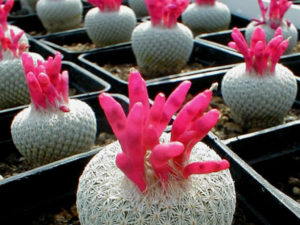
This cactus is one of the many false peyotes. Regardless of the fact that it is not a genuine peyote, it is still well known by the Tarahumara Indians and the Huichol Indians for its strong hallucinogenic effects. It can be so strong that it is often feared for its ability to induce permanent insanity.
Iboga (Tabernathe iboga)
The tree pose us is a number of cult followers, being well known all across Africa and the Congo. It has been used since ancient times as a hallucinogen with great magicoreligious value. Especially the Bwiti cult have respected its sacred ceremonial use as a stimulant, aphrodisiac and psychedelic; And they still use it to this day.
Jurema (Mimosa hostilis)
Jurema is very popular throughout the Amazon and South American countries, as it is native to Brazil and the area. It has been used in ceremonies by the Brazilian tribe of the Pernambuco and other, now extinct, tribes in the area for centuries. It is a strong hallucinogen which is only present in a few remaining ceremonies in South America.
Kanna (Mesembryanthemum expansum, Sceletium tortuosum)
Kanna, sometimes called Canna or Channa, was a powerful vision-inducing hallucinogen in ancient times. It is no longer used as a hallucinogen, but is still employed all throughout the world and by shamans of South Africa for its sedating and relaxing effects.
Kieli or Kieri (Solandra brevicalyx)

Kieli has been employed by the ancient Aztecs as a hallucinogen due to its strong content of tropane alkaloids. The plant is used to brew a tea that is both intoxicating and a hallucinogen. It is specifically well-known to the Tecomaxochitl and Hueipatl Indians of the Aztec tribes. Kieli is still used by shaman in the area to this day.
Kwashi (Pancratium trianthum)
This plant is native to Botswana, and is regularly used by the Bushmen. It has very important religious significance throughout various tribes in West Africa. Typically the bolts of the plant are cut in half and then rubbed over fresh incisions made on the scalp of a user. As barbaric as this administration method may sound, it’s quite similar to injection. Kwashi is a strong hallucinogen.
Latue (Latua pubiflora)
This plant is well known throughout South America, but was most heavily employed by shaman of the Mapuche Indians in Chile. It can create intense hallucinations and visions, and is capable of inducing permanent insanity. The leaves contain a strong content of tropane alkaloids, which are responsible for the hallucinations.
Liberty Cap (Psilocybe semilanceata)
Liberty Caps are a fungus with psychoactive effects, very commonly used for its psilocybin and psilocine, which are known to cause hallucinogenic activity. Although the mushrooms are used worldwide today, they were most well-known for their use thousands of years ago in central Europe, as well as within European witchcraft.
Maiden’s Acacia (Acacia maidenii)
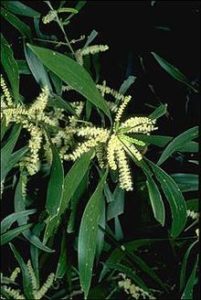
This Acacia is a strong producer of DMT and has been well employed in modern times throughout the world. It is wildly available growing throughout Australia and California. It has been used by ancient tribes and cultures around the world for its DMT content. Some cultures use this for ayahuasca and others prefer to combine it with a variety of drugs (such as Pituri by the Australian Aborigines).
Mandrake (Mandragora officinarum)
Mandrake has long been feared by many due to its association with witches brews and witchcraft. However, it has other magical effects, such as those induced by its hallucinogenic tropane alkaloids. It has played a huge role throughout much of European folklore and is still used today.
Marijuana (Cannabis sativa, indica)
Many people fail to acknowledge that marijuana is actually hallucinogenic to some degree. It may not be anywhere near as powerful as some of the more psychedelic hallucinogens (magic mushrooms, mescaline, etc.), but with the right preparations and dosages, a variety of effects can be felt from mild relaxation to euphoria, to even hallucinations. Cannabis has a long history of being used throughout many cultures around the world, and has been used in many more today as well.
Mescal Bean (Sophora secundiflora)
Mescal Beans are one of the primary sources for ancient Mexican tribal divination and prophecy. These magic beans produced such powerful hallucinations that they would be taken by many shaman from many different tribes dating back as far as nearly 10,000 years. Mescal beans are one of the oldest traditionally used botanicals on record. They are capable of inducing euphoria, visions, energy, and full-blown hallucinations. In high doses they are dangerous, so traditional tribal prepared drinks are always safer than recreational experimentation. The natives still use mescal beans to this day for a variety of mediumships.
Nightshade (Scopolia carniolica)
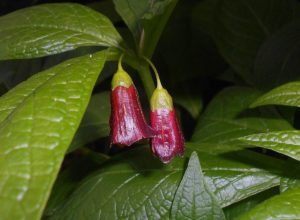
The nightshade family is responsible for so many hallucinogens used throughout the world today. They also contribute very highly to many of the folklore and historical tribal uses of hallucinogens. They contain high amounts of tropane alkaloids, especially scopolamine, responsible for the hallucinogenic effects. They were very common in Europe (and still are to this day) as a halluciongen, intoxicant, witches brew ingredient, aphrodisiac and salve.
Ololiuqui (Turbina corymbosa)
The seeds of the morning glory are one of the most profoundly significant botanical influences on the religions spread throughout Central and South America. The seeds also played an important role in Mexico. Morning glory seeds have been used for their hallucinogenic value dating all the way back to the Aztecs (at least) and were very commonly used as a pain reliever and analgesic, for divination and prophecy, and for their intoxicating effects. They produce Ergoline alkaloids and the lysergic acid amide and lysergic acid hyrdroxyethylamide are very closely related to actual LSD. Ololiuqui is still used to this day by the Chinantec, Mazatec, Mixtec, Zapotec and many other tribes.
Paguando (Lochroma fuchsioides)
The Paguando plant has been used by the Indians of Sibundoy Valley in Colombia, as well as the Kamsa of the Andes for a long time. They are used by the shaman of these cultures to seek divination and prophecy. They can be used to diagnose disease, although admittedly only used when other medicines are in shortage or unavailable. Typically the bark is boiled into a tea and while the intoxicating effects are not usually pleasant, they do induce hallucinations that shamans find valuable.
Peyote (Lophophora diffusa)
The genuine Peyote cactus has been used since before the Aztecs for a number of religious and mythological purposes. The shaman of the Tarahumara and Huichol (as well as others) would use these cacti to induce strong hallucinogenic effects. They produce one of the strongest natural hallucinogens known to man, and known to history: mescaline. Extremely visual, vivid, colorful hallucinations are created from ingesting the cactus raw or after it is brewed into a tea. Shaman around the world use Peyote and Mescaline (still most dominantly used in its native territories in Mexico and the Southern United States) for its psychedelic, hallucinogenic vision-inducing properties.
Peyotillo (Pelecyphora aselliformis)
Although the Peyotillo is another false Peyote, it is still hallucinogenic and possesses alkaloids used in religious ceremonies. It is valued throughout similar Mexican cultures as the Peyote itself.
Pitallito (Echinocereus salmdyckianus)
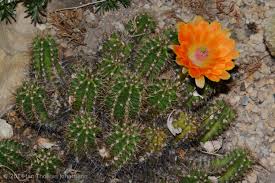
Pitallito is another false Peyote and has been employed by the Tarahumara Indians of Chihuahua for centuries. Collecting this cactus in itself is a ritual and involves singing among the Pitallito hunters. It is still employed today for its similar hallucinogenic effects.
Pituri Bush (Duboisia hopwoodii)
The Pituri Bush has been used for more than 40,000 years in Australia for a variety of rituals. Pituri has medicinal and recreational uses. It has an extreme religious value to the bus would importance among the Australian Aboriginal and has become a shamanic drug for its dream and vision inducing effects. Pituri has also triumphed as one of the regions lead social substances, providing an intoxicating, pleasant mood to those who indulge.
Piule (Rhynchosia longeracemosa)
Piule grows throughout Mexico and has been well-known to be used as an ancient Meixcan hallucinogens among the various tribes. Because the effects of the Piule plant are so similar to those of a hallucinogenic morning glory concoction, it is typically mistaken for Morning Glory itself. It is still employed throughout rituals in Mexican tribes today.
Reed Grass (Phalaris arundinacea, aquatica)
Reed Grass was very commonly used in ancient times as a strong hallucinogen for its DMT content. Traditionally an extract was made out of the leaves, and sometimes used in ayahuasca drink. The DMT content in these reeds is so high that it has been a very common go to plant for DMT among shaman and recreational users today, especially in Western cultures.
Sanango (Tabernaemontana coffeoides)
This African and South American plant has been employed for centuries by shamans and used in traditional medicine within many tribes. It is also well-known in India and considered a narcotic. The seeds contain alkaloids that induce strong visions, making this plant a powerful hallucinogen. Sanango is still used in modern times.
San Pedro (Trichocereus pachanoi)
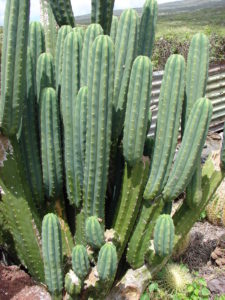
The South American cactus is often regarded as the second most powerful psychedelic cactus. It is also nearly equally as important as peyote in many religious sects. It is very commonly used in the Andes, within Peru, Ecuador, and Bolivia. Although it possesses a number of medicinal purposes, it is most frequently used for its high content of mescaline. The San Pedro cactus is still well sought after today.
Screw Pine (Pandanus sp.)
The Screw Pine can be found in New Guinea and is very commonly used as a hallucinogen for its high DMT content. The natives of New Guinea still consume the fruit in modern rituals and for social events.
Shang-la (Phytolacca acinosa)
Shang-la is native to China and a well-known, well employed medicine. It also has been used by shamans and sorcerers for its prophecy-like visions and hallucinogenic properties.
Shanin (Petunia violacea)
The Petunia may produce beautiful flowers, but the dried herb can be smoked and has been used by the Indians of Ecuador for hundreds of years to induce hallucinations in the form of the sensation one is flying or levitating in the air. The Shanin plant lacks major chemical and alkaloid research.
Shanshi (Coriaria thymifolia)
Like Shanin, Shanshi is native to Ecuador and also produces the psychoactive, hallucinogenic effects that a user is soaring through the air or levitating. The fruit of the Shanshi plant is what contains the relevant alkaloids, though little is known about them.
Sinicuichi (Heimia salicifolia)
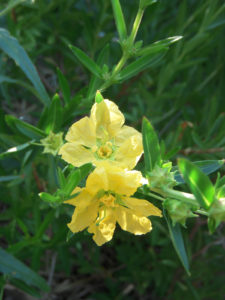
This species of Heimia is most important in Mexican folk medicine and has been employed throughout Mexico for its hallucinogenic properties. The natives of various Mexican tribes have used this plant to induce supernatural powers in a number of ceremonies. Many natives believe it can help provide clarity and allow one to see into ancient history, or events of their past (even prenatal events).
Sweet Flag (Acorus calamus)
Sweet Flag is also sometimes known as Flag Root, Sweet Calomel, and Calamus. It was very popular among the Cree Indians in Canada and provides a hallucinogenic intoxication. It is said that in large dosages, it can provide effects similar to that of LSD (wild, vivid and very visual hallucinations).
Syrian Rue (Peganum harmala)
Syrian Rue has been used as a hallucinogen within a number of religious ceremonies throughout the Asia Minor, and India. Although it has significant historical relevance in folk medicine, as an aphrodisiac, and for religious use, it is still employed today. The dried seeds constitute the drug Harmal, a concoction of India. There are many uncontested hallucinogenic principles present in Syrian Rue.
Taglli (Pernettya furens)
Taglli has a long history of use in Ecuador and throughout South America. It has played huge roles in many South American religious ceremonies. It is routinely employed, throughout history and in the present, as a hallucinogen by eating the fruit.
Taique (Desfontania spinosa)
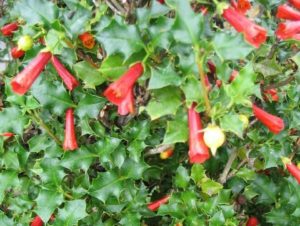
Taique, also known as Latuy or Borrachero, is a well-known hallucinogen throughout Chile and Colombia. Shaman and medicine men of the Kamsa tribe use Taique to brew a special hallucinogenic drink that helps them dream and diagnose disease. The tea is made from the leaves and/or fruit.
Teonanacatl (Conocybe siligineoides, Panaeolus sphinctrinus, Psilocybe acutissima, and others)
Also known as Tamu, the Conocybe and similar species of mushrooms growing throughout the Americas has been long associated with ancient religious use. There is no doubt that the Aztecs had worshiped the mushroom, considering its sacred. The mushrooms were very frequently consumed in whole were via some sort of concoction or infusion throughout many religious ceremonies. Some of these mushrooms are considered the most sacred of mushrooms on earth to many religions. They contain many indolic alkaloids which are responsible for the hallucinogenic effects. They are still used today for religious purposes, as well as for recreation around the world.
Jimsonweed, Thorn Apple (Datura stramonium)
Datura has been well employed throughout the world for its hallucinogenic effects throughout history. It is very rich throughout Native American folklore. It is also well known to European cultures based upon native strains, as well as through the experiences of the colonies encountering the other species around the world. Thorn Apple can be very dangerous when overdosed, even leading to fatality. Still, Datura is well implemented for its hallucinogenic properties to this day.
Tolache (Datura innoxia)
Another member of the Datura family, Tolache has been enjoyed by Indians of the American Southwest for a very long time. It is also well-known to the Aztecs and many other Indian tribes throughout the Americas. It has been used by priests, medicine men, and shaman for its healing, analgesic, and hallucinogenic effects. It is still used today among many Indian cultures, including the Tarahumara, the Zuni and the Yokut. It is also used for recreation in Western culture.
Tupa (Lobelia tupa)
The leaves of this intoxicating plant have been enjoyed by the Indians of Chile for countless centuries. Particularly the Mapuche and some Andean Indian tribes are well-known for employing this herb as a hallucinogen. It is also well-known throughout folk medicine in the area. Normally the leaves are smoked or brewed into a tea.
Turkestan Mint (Lagochilus inebrians)

Turkestan Mint has been used for centuries by the Tajik, Tatar, Turkoman and Uzbek tribesman. It is native to Turkestan and is usually consumed by brewing the leaves into a tea. It is used by shaman and in religious ceremonies as a hallucinogen intoxicant.
Voacanga (Voacanga africana)
The Voacanga plant is native to Africa and has many species which are used as aphrodisiacs, medicines and hallucinogens. Many different tribes throughout Africa use this plant to induce extremely visual hallucinations of intense experiences. It is popular among African magic men and shaman alike. The hallucinogenic alkaloids are found in the seeds and bark.
Wichuriki (Mammillaria craigii)
Wichuriki is also known as Hikuli, Hikuri, and Mammillaria. The Tarahumara Indians use this along with Peyote, and value it religiously in the same manner. It is one of the few sacred cacti respected throughout Mexico and used in a variety of Mexican religious practices. It is used by Mexican shaman and special religious ceremonies to create visual hallucinations by eating roasted parts of the plant and the fruit. This cactus contains DMT.
Hawaiian Wood Rose (Argyreia nervosa)
The Hawaiian Wood Rose is a very special plant, being well respected all throughout Nepal. It has been used dating all the way back to the ancient times of Ayurvedic medicine. Wood Rose has been used as an aphrodisiac, to improve and increase intelligence, and to slow down the aging process. It is also used as a hallucinogen. The seeds are typically grounded mixed with water, then being consumed to create LSD-like effects. The seeds contain ergot alkaloids, most importantly LSA, responsible for the hallucinogenic/psychedelic effects.
Yauhtli (Tagetes lucida)

Well-known to the Huichol of Mexico, Yauhtli was an herb of choice for shaman seeking hallucinatory effects in some religious ceremonies. Some shaman use it to enhance visions, others use it to induce visions. Sometimes it is mixed with tobacco.
Yun-Shih (Caesalpinia sepiaria)
Traditionally used throughout China and the surrounding region, Yun-Shih has allowed shaman and medicine men to communicate with the spirits, the deceased, ancestors, and even the gods. Some Chinese sources state the flowers allow one to see the spirits. Yun-Shih is intoxicating and hallucinogenic. It is very commonly found in ancient Tibet and Nepal medicines, and is still employed similarly in some cultures today.
Zacatechichi (Calea zacatechichi)
This herb is also known as “Aztec Dream Grass” and contains one unidentified alkaloid in the leaves which can be used to create hallucinogenic effects. The Indians of various Mexican (especially the Chontal of Oaxaca) regions and Costa Rica used the dried leaves to create a tea or cigarettes which could induce hallucinogenic visions and experiences.
About Modern Shamanism
Finding hallucinogens among Indian tribes and shaman is not too difficult. There is an even greater amount of practicing religious sects using hallucinogens and other psychoactive plants in the right regions of the world. Africa, Asia and South America are still filled with tribal use of hallucinogens within various religions. In fact, their ceremonies oftentimes would be meaningless without the plants, which are frequently considered sacred. Many laws which restrict use of or make certain plants illegal for their psychoactive, hallucinogenic or otherwise mind-altering effects (in the United States and around the world), will often exclude Natives (Indians, tribes, religious groups), so that they can continue to use the herbs as tradition has provided them this right. In conclusion, there are plenty of shaman and groups still using hallucinogens in their religious rituals and ceremonies.

